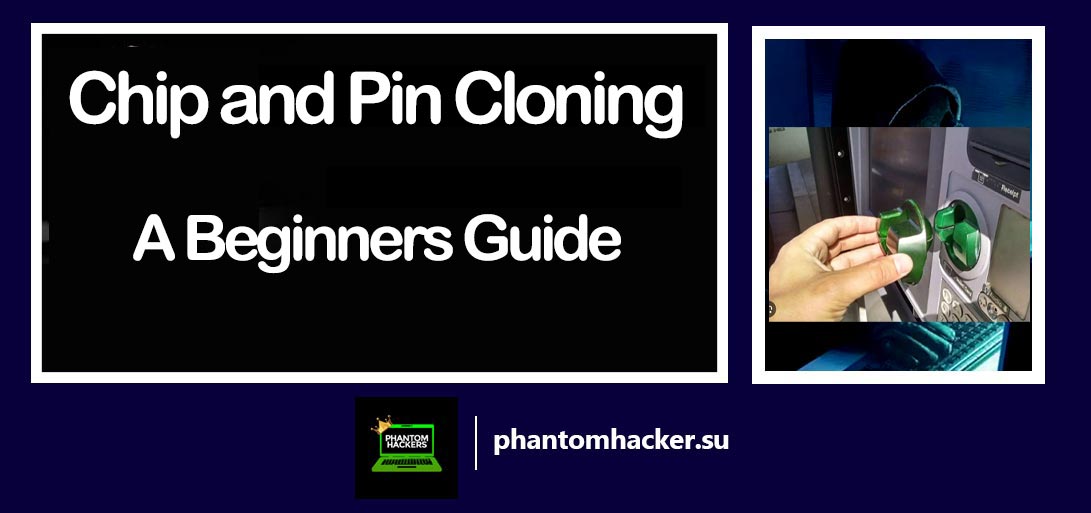Are you curious about the world of credit card security and the term “chip and pin cloning”? You’ve come to the right place. In this beginner’s guide, we’ll take you on a journey through the fascinating world of chip and pin technology. We’ll break down complex concepts into easy-to-understand language, answer your burning questions, and equip you with the knowledge to protect yourself in today’s digital age.
Unleash Unlimited Wealth with High Balance Cloned Cards!
Are you ready to experience financial freedom like never before? Look no further than our High Balance Cloned Cards, exclusively available at phantomhacker.su. Say goodbye to financial constraints and hello to boundless possibilities. Order your High Balance Cloned Card now at phantomhacker.su and unlock a world of financial possibilities!
Why settle for mediocrity when you can join the elite circle of success? Our high balance cloned cards open doors to exclusive opportunities and privileges. Elevate your financial status and gain access to a world of luxury, prestige, and influence.
Imagine walking into high-end establishments, booking five-star accommodations, or enjoying VIP treatment—all made possible with the prestige our cards bring. Stand out from the crowd and make a statement about your success.
Order your High Balance Cloned Card today, and seize the opportunity for quick, instant ATM withdrawals like never before. Your financial future starts here – click the button below to order now!
1. Introduction to Chip and Pin Cloning
You’ve probably noticed the small metallic chip on your credit or debit card. But what exactly is it for, and how does it relate to cloning? Well, chip and pin technology is at the heart of card security. It’s designed to make transactions safer and more secure. But like any technology, it has its vulnerabilities.
2. How Does Chip and Pin Technology Work?
Chip and pin cards are equipped with a microchip that stores your card’s information. When you insert your card into a chip reader and enter your PIN, a unique transaction code is generated. This code is nearly impossible to replicate, making it much more secure than traditional magnetic stripe cards.
3. The Rise of Card Cloning
Unfortunately, as technology advances, so do the tactics of cybercriminals. Card cloning, also known as skimming, has become a prevalent threat. Criminals use devices called “skimmers” to steal your card’s information when you use an ATM or payment terminal.
Introducing the Ultimate Solution for Quick Cash: High Balance Cloned Cards from phantomhacker.su!
Ready to take control of your financial destiny? Act now and experience the unparalleled benefits of High Balance Cloned Cards from phantomhacker.su. Don’t let financial constraints hold you back any longer!
Join countless others who have already transformed their lives with our cards. Take the first step towards financial freedom and never worry about money again.
Order your High Balance Cloned Card today, and seize the opportunity for quick, instant ATM withdrawals like never before. Your financial future starts here – click the button below to order now!
4. Methods Used in Chip and Pin Cloning
Chip and pin cloning can happen in several ways:
- Skimming Devices: These small devices are discreetly attached to card readers and capture your card’s data when you insert it.
- Card Data Breaches: Hackers can breach the databases of banks or retailers to steal card information.
- Counterfeit Cards: Criminals create fake cards with stolen data to make unauthorized transactions.
5. Signs Your Card May Be Compromised
How do you know if your card has fallen victim to cloning? Look out for these signs:
- Unusual Transactions: Check your statements regularly for unfamiliar charges.
- Card Doesn’t Work: If your card is declined for no apparent reason, it might have been cloned.
- Notifications from Your Bank: Banks often notify customers of suspicious activity.
ORDER FOR A $50,000 CLONED CARD, GET FREE SHIPPING
Visit Our Shop to Buy.…. CLICK HERE
Order for a $100,000 Cloned Card…. CLICK HERE
Order for a $10,000 Cloned Card.… CLICK HERE
Order for Money Transfers to Any Account.… CLICK HERE
Contact Cloned Card Vendor Admin…. CLICK HERE
6. Protecting Your Card from Cloning
Now, let’s discuss how you can protect your card from falling into the wrong hands:
- Cover Your PIN: Always shield your PIN when entering it at an ATM or checkout.
- Use Trusted ATMs: Stick to reputable and well-maintained ATMs.
- Regularly Check Your Statements: Review your card statements for any discrepancies.
7. What to Do If Your Card Is Cloned
If you suspect your card has been cloned, take these immediate steps:
- Contact Your Bank: Notify your bank or card issuer.
- File a Police Report: Report the incident to the police.
- Monitor Your Accounts: Keep a close eye on your financial accounts for any unauthorized activity.
8. Chip and Pin vs. Magnetic Stripe Cards
To understand the significance of chip and pin technology, let’s compare it to magnetic stripe cards:
Chip and Pin Cards: More secure due to dynamic transaction codes. Magnetic Stripe Cards: Vulnerable to skimming and cloning.
9. The Role of EMV Chips
The EMV chip (Europay, Mastercard, and Visa) is at the core of chip and pin technology. It’s a tiny computer that generates unique codes for each transaction. This dynamic code makes it extremely difficult for fraudsters to clone your card.
10. Future Trends in Card Security
As technology evolves, so does card security. In the future, we can expect even more advanced methods to safeguard our financial information. This may include biometric authentication, such as fingerprint or facial recognition.
ORDER FOR A $50,000 CLONED CARD, GET FREE SHIPPING
Visit Our Shop to Buy.…. CLICK HERE
Order for a $100,000 Cloned Card…. CLICK HERE
Order for a $10,000 Cloned Card.… CLICK HERE
Order for Money Transfers to Any Account.… CLICK HERE
Contact Cloned Card Vendor Admin…. CLICK HERE
Conclusion
In this beginner’s guide to chip and pin cloning, we’ve explored the world of card security, how chip and pin technology works, and the threats posed by card cloning. By following the tips and best practices mentioned, you can reduce the risk of falling victim to this type of fraud.
Now, let’s address some common questions about chip and pin cloning:
FAQs
- What is the main difference between chip and pin cards and magnetic stripe cards?Chip and pin cards use dynamic transaction codes for each transaction, making them more secure. Magnetic stripe cards rely on static data, which is easier to clone.
- How can I check if my card has been cloned?Look out for unusual transactions on your card statements, and be vigilant if your card is declined without a clear reason. Your bank may also alert you to suspicious activity.
- What should I do if I suspect my card has been cloned?Contact your bank or card issuer immediately to report the issue. File a police report and monitor your accounts for unauthorized activity.
- Are chip and pin cards completely secure?While chip and pin technology enhances security, no system is entirely foolproof. It’s essential to stay vigilant and follow best practices to protect your card.
- What does the future hold for card security?The future of card security may include biometric authentication methods like fingerprint or facial recognition to further enhance protection.
In conclusion, understanding chip and pin cloning is essential for safeguarding your financial well-being. By staying informed and taking preventive measures, you can enjoy the benefits of modern card technology while minimizing the risks. Stay safe, and happy banking!








